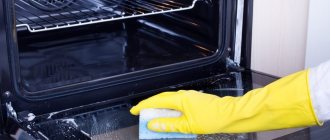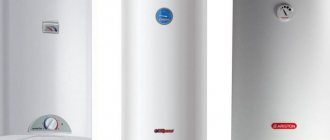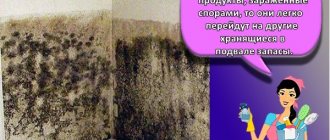Proven folk methods
The most effective methods include the following:
Rock salt . It perfectly cleans the channel and removes accumulated soot from the walls. The substance in an amount of 100-200 g is placed in a thin layer in the firebox. This technique corresponds to preventive work to remove soot from the chimney.
Potato peel . This product gives very good results. The cleaning bucket must be placed in small parts into the burning firebox. They begin to burn together with the starch that is part of the potato. Hot air enters the channel and loosens the soot. This technology is considered preventive. Subsequent cleaning of the chimney is done manually.
A weight with a brush attached to a strong cord . This element is lowered inside the pipe, cleaning the inner surface and removing existing deposits.
Birch or aspen logs . It is enough to heat the pipe with such pieces of wood to a high temperature. As a result, soot will burn out
This technique must be used with caution. With large deposits and low strength of the chimney, dangerous situations may arise, since aspen logs have high heat transfer.
Naphthalene . This chemical perfectly cleans the inside surface of the chimney. To use it, you must first check the pipe for cracks. If there are any, they must be sealed. A mothball tablet is thrown into the firebox. Heated soot begins to fly out of the pipe in the form of white flakes
It is important to remember that using mothballs is unsafe, since this product can destroy pipes and ignite soot deposits. One of the disadvantages of this technology is the unpleasant, pungent odor.
High cleaning efficiency is achieved with a plaque thickness of no more than 10 mm.
Walnut shells . This is an excellent product with high heat transfer. You need to throw no more than 2 liters of the hard shell of the nut into the firebox. During combustion, the temperature rises to critical values, which can lead to deformation of the pipe and the appearance of cracks. That is why such a restriction was established. Due to the strong burnout, the soot is completely removed from the pipe.
Aluminum . Parts made of this material burn well in high heat and prevent the formation of soot. To prevent aluminum from changing color and burning, the fire must be on coals. For example, it will take only five minutes to burn a can made of this non-ferrous metal.
How to clean a chimney pipe in a private house
If the smoke channel is severely clogged, the first operation is to break through the carbon deposits with a core without additional devices. Only after this are brushes of different sizes and designs used sequentially.
When performing work, care should be taken to create safe working conditions.
When working at height, be sure to wear a safety rope
Video: how to clean a chimney in a private house
https://youtube.com/watch?v=mZ_DrH7-jpY
Cleaning the chimney in the bathhouse
The chimney in a bathhouse is usually simpler. And most often it is made from stainless steel pipes, which requires special attention to its cleaning. In order not to negate its main advantage - the high quality of the internal surface - cleaning should be done only with soft plastic or brushes made from natural materials. It is easiest to manage with straight pipelines, and if there are elbows - let us remind you that there should be no more than two of them - you may have to dismantle the chimney if special windows for cleaning were not provided in it during installation.
Otherwise, preventive measures and cleaning are carried out in the same way.
Cleaning the chimney pipe from resins
When considering the composition of flue gases, you need to pay attention to two main components - water vapor from fuel and vapors from creosote, which is difficult to ignite. Mixing and settling on the walls of the smoke channel, they form a resin that is difficult to remove due to its viscosity and good adhesion to various types of surfaces
The only effective way to combat tar deposits is to prevent its formation. For this, various products are used that are produced specifically for this case.
HANSA effectively protects chimney walls from tar formation
For example, the known composition HANSA is a fine crystalline substance. Part of it turns wood into resin and water vapor, and the second, reacting with the resin substance, promotes its decomposition and combustion at the temperature in the furnace. The remaining resin on the walls turns into a brittle crystalline composition that crumbles inside the furnace.
This composition is placed inside a burning firebox. The frequency of use at the beginning of operation of the heating unit is daily, then you can switch to using it once a week.
Cleaning a curved chimney
Bends in the smoke duct are always a necessary measure caused by the design features of the building. However, periodic cleaning is necessary. For this purpose, the pipeline design includes elements that can be used to perform this operation easily and simply. These are special hatches, when opened, it becomes possible to access the straight section of the bend. It is not recommended to make the length of inclined sections more than a meter in size. The number of bends on one pipe should not exceed two.
If there is no window for cleaning on the outlet elbow, then the chimney will have to be disassembled
How to clean the chimney of a gas water heater
The reason for cleaning the chimney of a gas water heater is its banal clogging with deterioration of draft. In a city apartment, this is all the more dangerous because the threat arises for many people at the same time. One of the signs of deteriorating traction is the “popping” of the column igniter.
The process of cleaning the exhaust pipe from a gas unit is practically no different from such an operation with conventional chimneys. The same brush is used. Recently, specially designed vacuum cleaners have often been used to reliably clean the surface of the pipe and collect contaminants. In difficult cases, when deposits cannot be removed with a brush or vacuum cleaner, special chemicals are used to soften and remove them. Considering that the use of preventive agents on the dispenser pipe is impossible, immediate measures should be taken if signs of clogging are detected.
It must be recognized that the success of using solid fuel furnace equipment depends to the greatest extent on the correct operation of the units and careful selection of fuel for it. In addition, it is necessary to regularly use preventive measures and know how to get rid of problems with clogged chimneys. Then stoves and fireplaces will delight you with beneficial warmth in your home for a long time. I wish you success!
Prices for chimney sweep services and where to find them?
The profession of a chimney sweep is again in demand due to the fact that recently cases of fires in private homes have become more frequent. And they are connected precisely with the contamination of the chimney, as well as with its improper design.
It just seems that everything is easy. In fact, this profession takes several years to be trained. Where can you find such masters? This is where the Internet comes to the rescue. Similar announcements can be found on bulletin boards. You need to search in the services section for your region.
Another way is to contact a furnace equipment service company. Some of them provide similar services.
Prices vary depending on the specific region and the popularity of the specialist. On average, a full range of services will cost 1000 rubles per 1 m2 of cleaned pipe. Vacuum cleaning of ovens will help you get rid of soot and dust.
Chemicals to combat soot
To reduce the need for chimney sweep services, you can use chemicals to prevent the formation of soot - liquids, powders or briquettes that must be added to burning wood. All these means contribute to the destruction of the soot layer and its shedding down the walls of the chimney.
The most popular means:
- anti-carbon powder PHC - burned simultaneously with firewood, 150-120 g is enough for one ton of fuel;
- Kominichek cleaner is a product made in the Czech Republic and sold in the form of a package with five sachets weighing 14 g;
- chimney sweeper log - has the shape of a bar, when burned, substances are released that clean out carbon deposits along with the flow of combustion products exiting through the chimney;
- Cheerful Chimney Sweep powder contains resins that lower the temperature and help burn out carbon deposits; it is not a toxic product, which sets it apart from its competitors.
You can buy all of the above chemicals at any hardware supermarket.
According to the instructions, one bag is enough to clean a stove or fireplace; two bags are required for a wood-burning heating boiler. The bag should be thrown onto the burning wood without opening it and the firebox door should be closed. The dose cannot be increased.
If the soot layer is very thick, it is better to repeat the procedure. For prevention purposes, it is advisable to burn one sachet every two weeks. In addition to removing soot, this product increases the efficiency of wood-burning heating appliances and allows you to save money when purchasing fuel.
The second most popular means is the “Chimney Sweeper” log - a block (briquette), the combustion of which releases substances that affect soot deposits and contribute to their shedding down. The main purpose of this chemical cleaner is to prevent narrowing of the cross-section of chimneys due to soot and carbon deposits.
Stove maker's note: in large Russian stoves it is necessary to burn two Chimney Sweep briquettes at a time.
“Chimney sweeper” consists of sawdust, coal wax with coal dust, ammonium sulfate, urea, zinc chloride, sodium sulfate, silica and phosphorus oxide. This product is especially effective for brick chimneys.
Before using the Chimney Sweep for the first time, you must make sure that there are no loose bricks, debris, bottles or bird nests in the chimney. The most effective way to burn briquettes is on hot coals. Additives entering the pipe affect its inner surface for up to two weeks. All this time, soot falls into the firebox from above. After two weeks, it is advisable to clean the elbow and smoke damper.
How to clean the stove from soot
Soot does not accumulate in a stove as quickly as in a chimney. This is due to the fact that when the fuel burns out in the bunker, there is continuous movement, so soot does not have time to accumulate. When there is a need to light the stove, firewood is placed in it. From time to time they are turned over using a long metal rod or poker. After this, the ash is cleared from the stove. Such actions are necessary in order to keep the structure clean.
Constant formation of soot can even lead to complete blockage of the chimney
In addition to minimal cleaning of the stove from soot, there may be a need for thorough preventative cleaning. This includes:
- grate processing;
- cleaning the walls inside the structure;
- cleaning the entrance and exit to the chimney device.
These preventive measures are carried out only after cleaning the chimney.
Instructions for cleaning the chimney
Today, there are several options for cleaning soot from chimneys:
- standard cleaning;
- high temperature cleaning;
- chemical method.
Chemical method
Chemicals are used for preventative cleaning. They help remove a thin layer of soot. Products that can be found on sale may come with or without brushes. The most popular are:
- "Kominchek";
- "Chimney Sweep";
- "Composition against soot."
The substances can be used in a chimney that is not equipped with a smoke circulation system. Stove makers most often recommend the “Log Chimney Sweep” composition, which contains salt mixtures. They enter into a catalytic reaction, which can cause the soot to decompose. The powder should be added to the firebox along with the fuel. The product works for approximately 30 days.
The cleansing effect lasts for several days
Gloves must be used when working with powders. It is not recommended to visit the house for 5 days after cleaning, as an unpleasant odor will remain. After treatment, the building requires mandatory ventilation.
High temperature cleaning
Another method that can be used to clean soot from a stove and chimney is high-temperature cleaning. Features of this method:
- is dangerous because it is necessary to work at elevated temperatures;
- suitable for significant contamination when the stove and chimney have not been cleaned for many years.
Sequencing:
- First of all, you will need to prepare aspen firewood.
- The logs need to be placed in the oven and set on fire.
- When the fire has consumed all the fuel, open the dampers to let the stove burn out. This method can ensure that the pipes are blown with hot smoke.
High combustion temperature provides powerful thrust
The method is effective only for high-quality stoves. If the device is old, cracks may appear inside after cleaning.
Classic cleaning method
You can get rid of soot using a brush with a weight.
It is important to choose a tool that best suits the size of the chimney cross-section
The tool is a metal brush with a rope, at the end of which there is a wire or rope with a weight. Any iron object can be used as a weight: a weight, a piece of metal or a bearing. The weight of the part must be at least 3 kg. The length of the rope should slightly exceed the length of the chimney pipe. The outermost part of the brush should reach the stove so that it is possible to thoroughly clean the channels. To clean, you will need to lower the brush into the chimney device and clean the walls with rotational movements.
Chimney cleaning should be done in clear, windless weather.
This must be done with caution. To avoid falling from a height, it is recommended to tie a rope around your torso and tie it to the roof. If the chimney is not very clogged, the cleaning process will take approximately 30 minutes. When rotating, the brush will scrape debris and soot from the pipe walls. Once the pipe is cleaned, you will need to remove debris from the stove. You should also clean the view and walls of the firebox.
Video: instructions for cleaning the chimney
Cleaning the well and coil from soot
Wells need to be cleaned at least once every 3 years. They are located on three sides of the stove, except for the one where the hob is installed. At the entrance to the well, half of the brick lies edge-on.
- You will need to find voids by tapping the structure with a trowel or spatula.
- Next, remove the plaster and take out the part of the brick that is the door to the well.
- Ash often settles in wells, which needs to be removed with a scoop or deep shovel.
- After cleaning the wells, they need to be covered with bricks and covered with a quick-hardening mortar. Plaster or a mixture of clay, lime and water is suitable.
A lot of ash accumulates in wells. It should not be thrown away, as ash is a good fertilizer for the garden.
The grates can be cleaned with household chemicals for washing various products.
Before cleaning the grates, you need to wait until the oven cools down.
To clean the coil, a mechanical or steam-air method is used. It is difficult to do this work with your own hands. The steam-air method involves burning fuel in a closed coil by supplying steam or air and heating the structure to the temperature required for burning. Mechanical cleaning is a labor-intensive operation that is performed exclusively by specialists.
How to clean the oven using folk remedies
The simplest option is to use table salt. In this way, it will not be possible to clean a thick layer of soot, so the method is most often used for prevention. To clean, salt must be added to the firewood and allowed to burn.
Another way is to use potato peelings. The released starch will begin to interact with the soot, after which it will break down. The consumption of raw materials depends on the size of the stove; on average, 1 bucket is used.
Potato peelings are poured onto burning coals
What tools are needed?
To carry out cleaning work, it is important to prepare all the necessary equipment, including the following:
- metal brush;
- a brush with very stiff bristles;
- flexible clamps;
- scraper;
- bucket;
- chemical substances;
- a metal ball whose diameter is equal to 2/3 of the chimney.
The steel core is used for various purposes. Its main function is to remove blockages. But if you attach a brush to it, this element will become much heavier, and accordingly, the efficiency of cleaning the chimney walls will increase several times. If you connect all the parts with a metal cable and use carabiners, you can adjust the length of the cleaning device.
Why does soot form in the chimney?
The reason for the formation of soot in the chimney is incomplete oxidation of carbon. Soot is carbon bound to pollutants and other unburned substances. Insufficient oxidation can occur for two reasons: lack of oxygen and insufficient temperature. In both cases, active soot formation occurs.
It's not good anymore. Regular chimney cleaning required
Here are specific situations that lead to the appearance of soot in the pipe:
- Using wet firewood. When laying undried firewood, it dries out for some time in the flame, then begins to burn. Drying takes some time, but the main thing is that wet firewood lowers the temperature. This means that soot is deposited on the walls of the chimney.
- Oven operation in smoldering mode. In this case, the fuel decomposes due to a lack of oxygen, which contributes to the formation of soot. Also, the smoke temperature in such modes is not higher than 100°C, and often even lower. This also promotes soot formation. So if you operate the stove in smoldering mode, be prepared for the fact that the soot will need to be removed regularly.
- Burning plastic and other waste. Substances that are formed when burning waste, like cement, hold together existing deposits. So it is better to throw away garbage containing plastic.
- Plywood, chipboard, OSB and other materials containing adhesive are also soot adhesives. The plaque becomes very dense and difficult to remove.
- Insufficient traction. This drawback of the furnace design is not just unpleasant, it is dangerous. Since it does not guarantee timely and complete removal of combustion products. The slow movement of combustion products also contributes to the deposition of soot.
Certain types of firewood containing resins also contribute to the deposition of soot in the pipe. The more resins, the more likely plaque will appear. If the pine or spruce is dry, there will be no problems. But damp, resinous firewood very quickly reduces the time until the next chimney cleaning.
How to find out about the need for chimney cleaning
If you do not clean the chimney, the roughness of the walls becomes greater, and the force of air friction on the side surfaces increases.
The traction force is spent on overcoming this resistance and, as a result, the rate of release of combustion products decreases and the air consumption for heating decreases. The temperature in the firebox drops and the house becomes cold . Instead of cleaning the channel, the owners of a private house begin to add fuel. All of the above reasons lead to a violation of traction, which is manifested in the following performance indicators:
- The amount of heat in the house remains constant, but more fuel is required to achieve this.
- Hot gases can cause soot in the pipe to ignite and lead to a fire.
- Burning soot emits black smoke visible from the chimney, and absolutely dry fuel can be loaded into the stove.
- The color of the flame turns into a dark red hue, which indicates a lack of fresh oxygen due to reduced draft.
The chimney in the house should be cleaned only if it removes solid fuel combustion . When gas fuel is burned in a chimney, other problems arise related to the formation of condensation.
The norm is to clean the chimney from soot once a year , this is done in any way at the beginning and end of the season, which prevents major cleaning or even disassembly of the chimney pipe.
How can you clean a chimney manually?
The most reliable and effective way is to scrape the soot from the walls of the pipe. But it is advisable to use it only if the thickness of soot deposits exceeds 2 mm.
Let us immediately note that it would be more correct to entrust this task to a professional chimney sweep (yes, they still exist), who not only has special skills and tools, but can also competently assess the condition of the chimney and tell the owners where to carry out repairs.
When starting cleaning, pay attention to the following recommendations:
- If cleaning is supposed to be carried out from above, that is, from the roof, do not forget to first close all cleaning holes inside the house - through them a fair amount of soot can get inside the room.
- If the pipe being cleaned is part of a fireplace or other installation whose firebox is not closed by a door, you should cover the loading opening with a damp cloth. If there is a door, it must be closed.
- To ensure safe work on the roof, it should only be carried out in dry, windless weather and with mandatory insurance.
If you are cleaning the chimney after the stove has been idle for a long time, you should first check to see if there is a bird's nest in the chimney. In some cases, it cannot be pulled out through the head - then the socket is pushed through the entire pipe to the very bottom.
Round chimneys are cleaned with a brush with metal bristles, the diameter of which is approximately 1/5th greater than the internal diameter of the pipe.
To clean brick chimneys with a rectangular cross-section, use a brush, also a metal one.
The brush is suspended on a cable and lowers under its own weight, while the brush has a stacked (composite) handle, which is gradually built up.
A particularly thick and dense layer of soot must first be cleaned off with a special scraper before using these tools.
Sometimes impassable areas form in the pipe due to accumulated debris or bricks falling out of the masonry.
In this case, the chimney sweep has one more tool - a heavy steel ball (called a core), suspended on a cable. In earlier times, the diameter of such balls was standardized and was 85 mm. Today, kernels of various calibers are used. Selection condition: the ball must cover the chimney lumen by 2/3.
If an obstacle is detected, the cannonball should be thrown into the pipe. In this case, it must be oriented in such a way that it does not hit the chimney wall - preferably in the center. Also, the core is very often attached to a ruff or brush as an additional load.
Do not try to use dumbbells or weights instead of the core: such objects may simply get stuck in the chimney.
Homemade brush for cleaning pipes
If the chimney is installed on a fireplace with a large open firebox and is straight throughout, it is more convenient to clean it with a brush from below.
Upon completion of the work, it is necessary to open the cleaning holes, avoiding sudden movements, and free them from crumbled debris. It is convenient to do this with a special spoon specifically designed for removing soot, but in the absence of one, you can use a regular brush and dustpan. After removing the bulk of the cleaned soot, the holes can be vacuumed.
Also, do not forget to use a scraper or brush (you can also use a regular spatula) to clean the firebox of the stove or fireplace.
Traditional methods of chimney cleaning
Potato peeling - a popular way to clean a chimney
People learned to clean a chimney with their own hands in ancient times, using various folk methods. You can clean the “well” yourself using:
- Aspen firewood. Peculiarities:
- a lot of energy is released;
- temperature perfectly cleans brick and stainless steel chimneys.
- Potato peelings. Prepare about one bucket of peelings and dry them thoroughly. Flood the oven with a high-calorie product and place dried peelings on top. Subsequently, hot steam containing starch will soften the soot, heavy briquettes will fall, and the light briquettes will evaporate away.
- Table salt. Pour a couple of glasses of salt onto the fire; when combined with air, an environment is formed in which soot will not accumulate.
- Chainsaws. This chainsaw cleaning method is not recommended due to its dangers. You need to climb onto the roof and insert the intake valve into the chimney and start the saw motor. It is better to attach a special exhaust pipe to stay clean and direct the soot to a specific area.
High-quality mechanical cleaning
One of the most popular ways to clean a chimney from soot is gentle mechanical cleaning. When wall deposits become 2 mm or more, such manipulations are already considered necessary. In such a situation, other methods will only serve as prevention and a means of delaying time a little. The following are used as effective tools for such cleaning:
Convenient metal brush with weight.
It looks like a small brush with metal bristles, which is suspended from a strong cable or rope. A weight is attached to the bottom of the brush; this can be a regular core or a metal weight. As a reliable load for the brush, you can only use objects that have a stable center of gravity, otherwise there is a risk that the selected weight may simply get stuck in the passage and it will be possible to remove it only after completely disassembling the pipe.
Using this simple design, you can not only effectively break through a clogged pipe, but clear the chimney of soot. Thanks to convenient carabiner connections, all brush components are easy to assemble and separate, which makes this design very convenient to store.
Durable brush with assembled handle.
In the arsenal of many homes there is also an ordinary design of a brush with a convenient removable handle. This handle extends significantly, making the cleaning process easier. Such a tool allows you to clean the oven not only outside, but also inside. If there is a screw connection inside the chimney sections, it is not advisable to turn the brush, since there is a risk that part of the tool may become firmly stuck in the passage. Such devices have been used before by everyone who first wondered how to clean a chimney.
Compact scrapers.
If the deposit in the furnace has a thick layer, then more serious cleaning measures are required. For example, to better remove accumulated fumes, you can use a regular scraper, which in appearance resembles a construction chisel. The handle is also made composite with the possibility of extension so that you can reach the most remote sections of the pipe. With this reliable scraper you can remove even the most voluminous oily burnt deposits. With this tool, there will be no questions about how to clean a pipe yourself with minimal effort.
Before starting mechanical cleaning, you must ensure that all stove openings are tightly closed. If desired, the firebox can be covered with rags. All these measures help to avoid contamination of the room with burning particles. When the chimney is completely cleaned, the remaining ash is collected through special openings. The firebox itself must be cleaned at the end of the entire procedure. For this purpose, you can use a special, convenient vacuum cleaner with the function of cleaning fireplaces or stoves. After choosing the appropriate method for cleaning the chimney of all unnecessary things, you need to familiarize yourself with some safety measures that must be observed during cleaning work.
Mechanical and manual cleaning
For mechanical cleaning of chimneys today, the same tools are used as 200 years ago. The technology itself has also not undergone major changes. Cleaning is carried out from the roof side and from the stove side.
Tools and materials
To clean the roof side use:
- rope or steel cable;
- hard metal brushes and weights;
It is important that the load has the correct center of gravity. Otherwise it may get stuck. It is ideal to use a round metal core as a load. It is they who break through the blockage. And only then do the brushes come into use.
If you don’t have a suitable brush at hand, you can make one yourself from an old plastic bottle. Step by step instructions below.
How to make a ruff with your own hands?
- Take a plastic bottle and cut 150 mm from the top. Make cuts along the top part in 15 mm increments. The length of the cut is selected depending on the diameter of the pipe. If the pipe diameter is 100 mm, then the brush diameter should be 130 - 140 mm.
- Drill a hole in the center of the plug. Screw the plug into place and bend the petals.
- The first brush is ready. Now we do the second one in exactly the same way.
- Find a suitable load. Its weight should be sufficient for the brush to pass through the chimney.
- Tie the load to a strong cord or steel cable. Thread the other end of the cord into the brush plugs. The brushes should be positioned towards each other.
- Take the rest of the bottle. Cut off the bottom. It turns out to be a cylinder. Cut it lengthwise. Insert it between the brushes. The length of the cylinder should be about 150 mm. Give it a diameter equal to half the diameter of the brush. Secure with a stapler.
- Tie a knot over the top brush plug. The tool is ready.
The process of making a brush with your own hands
There is another option for making a brush with your own hands:
DIY brush in the form of a brush
Roof side cleaning
The whole process consists of 6 stages:
- Prevent soot from entering the room. To do this, cover the firebox with a wet cloth and close all hatches.
- Prepare in advance and use all necessary equipment for its intended purpose, comply with all safety requirements when working at height. You will need: safety glasses, closed non-slip shoes, gloves, insurance. It is prohibited to carry out work in rain or strong wind. And also under the influence of drugs, alcohol and other drugs.
- Remove the head and inspect the channel. If necessary, remove debris with a broom.
- The first pass is made using a weight. It will clean the chimney from large contaminants.
- After this, install the brushes and clean the channel walls from soot. There's no need to rush. This is not a difficult process, but it is a messy and time-consuming process.
- The last stage is cleaning the inspection chambers.
Cleaning the chimney from the stove side
The previous method will allow you to clean the channel only up to the first turn. Another tool will help you further clean the stove from soot without disassembling it. You can't use gravity.
The oven must have special hatches for cleaning. To do this, use another tool. A special brush with a rigid but flexible fiberglass cable will help you clean an area 3–5 m long. This set is sold in hardware stores.
There is also a more specific tool:
Chimney cleaning tool
This device allows you to clean a longer area. It is easiest to clean the external chimney. But only if it is assembled correctly.
Step-by-step instruction:
- Unscrew the plug. Clean it from dirt, grime and debris.
- If the pipe is made of stainless steel, then using a metal brush is strictly prohibited.
- We attach a suitable brush and perform cleaning, gradually moving the brush upward.
- The firebox itself is cleaned in the same way. The flexible but rigid support allows you to push the brush far enough.
- The collected soot is removed. And they carry out minor chimney repairs. It is important to remember to replace the pipe head.
How to clean a chimney?
Before we figure out how to clean soot from a chimney (chimney pipe), let’s find out why this is needed at all. So, first of all, let's figure out why it is necessary to maintain relative cleanliness in the chimney.
There are several reasons:
- Soot has thermal insulating properties and if the chimney is located inside the home, the latter will not receive some of the heat produced.
- A layer of soot in the chimney can flare up, which can lead to a decrease in the service life of the chimney, or even a fire.
- A smoke channel overgrown with soot has a smaller cross-section, which means the draft in it will be worse.
This leads to two undesirable consequences:
- due to insufficient oxygen supply, the fuel will not burn completely, so the efficiency of the furnace or boiler will noticeably decrease, and soot formation will noticeably increase;;
- There is a danger of toxic carbon monoxide entering the room.
As you can see, a seemingly harmless layer of soot not only worsens the characteristics of the heat generator, but also endangers the lives of the inhabitants of the house. Let's see how we can get rid of it.
Chimney cleaning products
You can clean the chimney using chemicals while it is not too clogged. If the pipe is brick, these products help make mechanical cleaning less frequent. As an independent product they can be used for ceramic chimneys or those made of stainless steel. All these powders or logs for removing soot from a pipe are preventative. It is not always possible to clean the chimney from a large amount of soot with them. There have been cases when the soot that fell after burning the powder clogged the chimney tightly. I had to take a brush and clean it by hand.
Despite these shortcomings, the products are used and here’s why: during processing, the soot that is in the boiler, sauna stove or smoke ducts also softens. Pulling them by hand is a small pleasure, but regular use does a good job of eliminating the problem.
There are plenty of products for cleaning chimneys from soot in stores, but here are the most popular:
- Kominichek. This is a Czech-made drug. The packaging contains paper bags with granules packaged in them. This soot remover is placed in a well-heated oven without breaking the bag. The whole paper bag is placed on the firewood; there is no need to tear it to pour out the product. According to reviews it works fine. The most effective is as long as the soot layer is no more than 2 mm - it cleans the chimney to clean walls.
- Log for cleaning the chimney. Most often they are called "Chimney Sweep", but there are other names. They are produced by different companies, so the boxes differ in design. Regardless of the manufacturer, the rules of use are the same: a log is placed in a well-heated oven to clean chimneys. That's all, during the combustion process, the substances contained in the smoke soften the soot and it evaporates or falls down.
- Powder products for cleaning pipes from soot of domestic production. There are a lot of them, a lot of them and different names. Most of them contain the word “chimney sweep”: Cheerful chimney sweep, Happy chimney sweeper, Chimney sweep Express, etc. There are many names and companies, but the essence is the same - the powder is packaged in bags, the bags are placed in a burning oven.
After using all chemicals, the room must be ventilated and the stove or fireplace must be cleaned. Please note that after treatment, the soot may still fall off for a couple of days - the remnants fly off.
The most common means:
- anti-carbon agents and PCP in the form of powders. When using them, you must follow the dosage (200 grams per ton of firewood);
- "Komichek" (Kominichek). Powder from the Czech Republic. Stimulates soot burnout at low temperatures;
- "Log Chimney Sweep". Used with solid and liquid fuels. Briquettes are used as soot forms. For stoves and boilers that are fired regularly, it is enough to throw “Log” into the fire every couple of months. For fireplaces used two to three times a week, two briquettes per year will be enough. When using the product before the start of the season, it is necessary to check the chimney for the absence of foreign objects. For maximum effect, it is recommended to place “Log” on hot coals;
- "Smoke". Products from a Russian manufacturer. Available in the form of boxes, logs and pellets;
- "Hansa" The product is especially good for removing creosote - tarry deposits. The product draws moisture out of the resin, causing it to lose its viscosity and peel off.
This is not a complete list of the proposed means, so there should not be any problems with selecting the right one.
Note that chemical cleaning is an excellent way to prevent contamination, which postpones or makes mechanical cleaning unnecessary.
Sequence of mechanical cleaning
The oven doors must be tightly closed to prevent soot from falling out.
If deposits in the fireplace are being removed, a damp cloth must be placed on the combustion chamber. To make the channel cross-section larger, you need to open all existing dampers. A safety belt must be placed on the body and secured well.
- The chimney is inspected on the roof. If the thickness of the soot layer is less than 2 mm, it is removed using chemicals. The garbage is simply pushed down.
- The header is removed. Use a stiff brush or scraper to remove all layers.
- Cleaning hard-to-reach places is done using a flexible brush. You can also use a cable that has a special attachment at the end. With each turn of the handle, the device moves downward.
- By moving a suspended metal ball, you can remove a layer of soot and other large blockages
- Work must be carried out carefully so as not to damage the integrity of the brickwork. After opening the chimney door, the soot layer is completely removed. The blower and combustion chamber are cleaned.
If plaque is removed in an open-type fireplace, the treatment is performed with a metal brush from the side of the firebox.
Upon completion of the procedure, it is necessary to light the stove to check the draft. The head is then installed in place.
Determining cleaning time
Over time, plaque forms on pipes made of any material. It must be cleaned off, otherwise the chimney will not work efficiently. When clogged, a reverse draft effect is formed and smoke enters the room and not outside. This can also lead to oven failure.
When choosing a cleaning time, you need to pay attention to the following factors:
- Downtime. When was the last time cleaning was carried out, and in what way.
- Chimney design. How can you clean pipes? The smoothness of the walls is also taken into account.
- What fuel is used. Was raw wood used for the fire? Have you thrown plastic and other garbage into the stove?
There are a number of signs by which you can understand that chimneys and stove pipes need to be cleaned of soot.
- Change in smoke color. With a clean chimney, almost transparent smoke comes out into the street. If it starts to turn black, soot has accumulated in the pipe and needs to be removed.
- Changing the color of the fire in the firebox. Under normal conditions, it should be light orange, and the firewood should crackle characteristically. When orange color appears, the chimney should be cleaned.
The simplest and most reliable way is a preventive inspection of the chimney by specialists. For this they use special weights that are placed in the pipe. If they pass easily to the stove, there is no or minimal precipitation. If obstructions appear, immediate cleaning is necessary.
Frequency of chimney and stove cleaning
How often should I clean? This information can be found in the table:
| Type of work and equipment | When to do it |
| Prevention of smoke ducts and chimney (visual inspection): | |
| Any equipment | After installation, before start-up or after repair |
| Seasonal equipment | Start of the heating season |
| Gas furnaces and boilers | At least 2 times a year, after 2 years - at least 1 time a year |
| Brick chimney | At least once a quarter |
| Other types of chimneys | At least once every 12 months |
| Chimneys of heating and heating-cooking stoves | Beginning, end and middle of the heating season |
| Chimney cleaning – elimination of deficiencies identified during inspections and additionally: | |
| B for heating and cooking (intermittently) | At least once a quarter |
| In continuous furnaces | At least once every 2 months |
| In ovens for continuous cooking | Every month |
| Cleaning the heads from ice – at least once every 2 months | |
How to clean soot from a chimney when it is already clogged? Below are step-by-step instructions.
Traditional methods of contactless cleaning
Please note that contactless cleaning eliminates the problem only for a while. If you have difficulty with mechanical cleaning, use the services of professionals. It is not recommended to light a fire inside the chimney, as the flames may spread from the firebox into the living space!
It is not recommended to light a fire inside the chimney, as the flames may spread from the firebox into the living room!
People often use the following methods to combat soot and burning:
- Burning potato peels together with firewood;
- Placing a bag filled with bricks into the pipe;
- Using pine firewood to clean the chimney.
Please be aware that none of these methods are foolproof cleaning methods and are not guaranteed to be completely safe. The best methods are mechanical or chemical cleaning. In some cases, you can combine several options if your design allows it.
How to clean a chimney mechanically
The most effective way to clean a chimney is mechanical. With the help of rough influence you can achieve much greater results than using salt or potato peelings.
Some “inventors” suggest burning aluminum cans to clean the chimney. However, the effectiveness of this method has not been proven. Since the reviews about it are not clear.
When cleaning a chimney, you should follow safety rules to avoid falling from the roof.
There are several ways to clean a chimney mechanically. We suggest that you first familiarize yourself in detail with the most common of them - cleaning the chimney with a brush.
Brush with weight
Chimney cleaning using various mechanical devices has been known for a long time. It is this method that is imprinted in the folklore of many European countries. Monuments to chimney sweeps can be found not only in the West, but even in Russia
Which once again speaks to the importance of their work. However, let’s not be distracted from the main goal, namely the answer to the question of how to clean a chimney.
For round pipes, a brush is best suited. This is a disc-shaped metal brush that is suspended from a cable or rope. A load is attached to the bottom of the brush - a core or a spherical weight. Other objects can also act as cargo.
But here it is important to remember that you should only use objects with a stable and undisplaced center of gravity. Otherwise, such a load may get stuck in the pipe and then the problem can only be solved by completely disassembling the chimney. . Under the influence of gravity, the brush falls down the pipe
A cable is used for lifting. The core itself (without the brush) can be used to break through dense clogs and plugs. Thanks to the carabiner connections, the brush elements can be quickly separated and assembled in the desired sequence
Under the influence of gravity, the brush falls down the pipe. A cable is used for lifting. The core itself (without the brush) can be used to break through dense clogs and plugs. Thanks to the carabiner connections, the brush elements can be quickly separated and assembled in the desired sequence
Causes of blockages
- Before you start looking for useful videos on the Internet, you should understand the reasons why the chimney in a bathhouse or residential building becomes clogged:
- non-compliance with operating rules;
- ingress of small birds, insects, foreign objects (garbage blown by the wind - plastic bags, crumpled newspapers, etc.) into the pipe;
- incorrect technology for laying a brick stove or fireplace, installing a heating boiler in the house, proportions and connecting structural units;
- lack of a protective “umbrella” at the end of the chimney from the street side (rain and snow penetrate the chimney, turning soot masses into dense mush and lumps).
All these circumstances lead to the fact that the combustion products of the fuel of a fireplace, stove or boiler do not have time to be removed outside. They settle on the walls of the chimney channel in the form of soot - sometimes it is a “fluffy” light mass, and sometimes in the form of fairly large flakes (typical of stoves and boilers operating on solid fuel).
Each individual case is individual. First, find out the nature of the blockage, the density of soot and the size of the layer on the walls of the chimney (or the presence of a foreign object in the pipe). The choice of tool and cleaning method will depend on this.
How often should you clean your pipe?
If the stove device is constructed correctly, the chimney will serve quite well for 2-3 years, without any cleaning. Nevertheless, this procedure should be carried out once every six months for confidence and peace of mind, because a lot depends on the fuel used: the pipe becomes clogged faster from burning garbage, bags, and plastic bottles. Over time, firewood also leads to contamination, no matter how high-quality it is, especially when it is stored raw or the room is heated with resinous spruce and pine trees. The best material for the firebox is considered to be dry logs that have lain in the woodshed for at least one and a half years. Only with this material the chimney becomes clogged much more slowly, and there are practically no unburned particles left.
If the pipe is overgrown with soot, it is not difficult to determine: the smoke coming out of it will noticeably change its color, that is, it will become darker. Ideally, the smoke exhaust duct should be light, clean, and easily ventilated. When soot accumulates in the pipe, the plaque itself begins to smolder, the escaping smoke becomes dense, dark, with strong soot. Moreover, the color of the flame itself changes: instead of light orange, it becomes richly dark, viscous. Such signs indicate that it is time to clean the chimney, otherwise a fire or smoke in the room cannot be avoided.
Ideally, it is better to check the channel twice a year - in autumn and spring. You need to inspect it not only for the presence of accumulated soot, but also for other waste products entering the hole from the outside: bird droppings, nests, cobwebs, dry branches, leaves.
There are many traditional methods for cleaning a chimney. After checking the device, all you have to do is choose the best method and get down to business, removing all the dirt and other waste present in the channel.
Exposure to chemistry
How to clean a chimney in an apartment using a chemical?
This is the second way to clean a chimney from soot. You can get rid of soot and clogs using a special anti-carbon chemical composition, for example, Kominichek from a Czech company. This powder must be added along with fuel, observing a dosage of 200 grams of product per 1000 kg of fuel. How does the effect of the powder manifest itself? During heating, the soot begins to gradually burn, and the temperature of this reaction should not be high. Such powders work with both liquid and solid fuels.
If you cannot purchase cleaning powders, then pay attention to logs called “Chimney Sweeper”. This product is quite economical and you will only need one briquette for 6 months, but this is provided that you light the fireplace twice a week.
Before using any of the above products to clean soot in an apartment, you need to make sure that there are no foreign objects or debris in the pipe.
Do not be alarmed that after using the Chimney Sweeper log, soot will fall out of the chimney for two weeks; this is normal and indicates that the product is working effectively.











